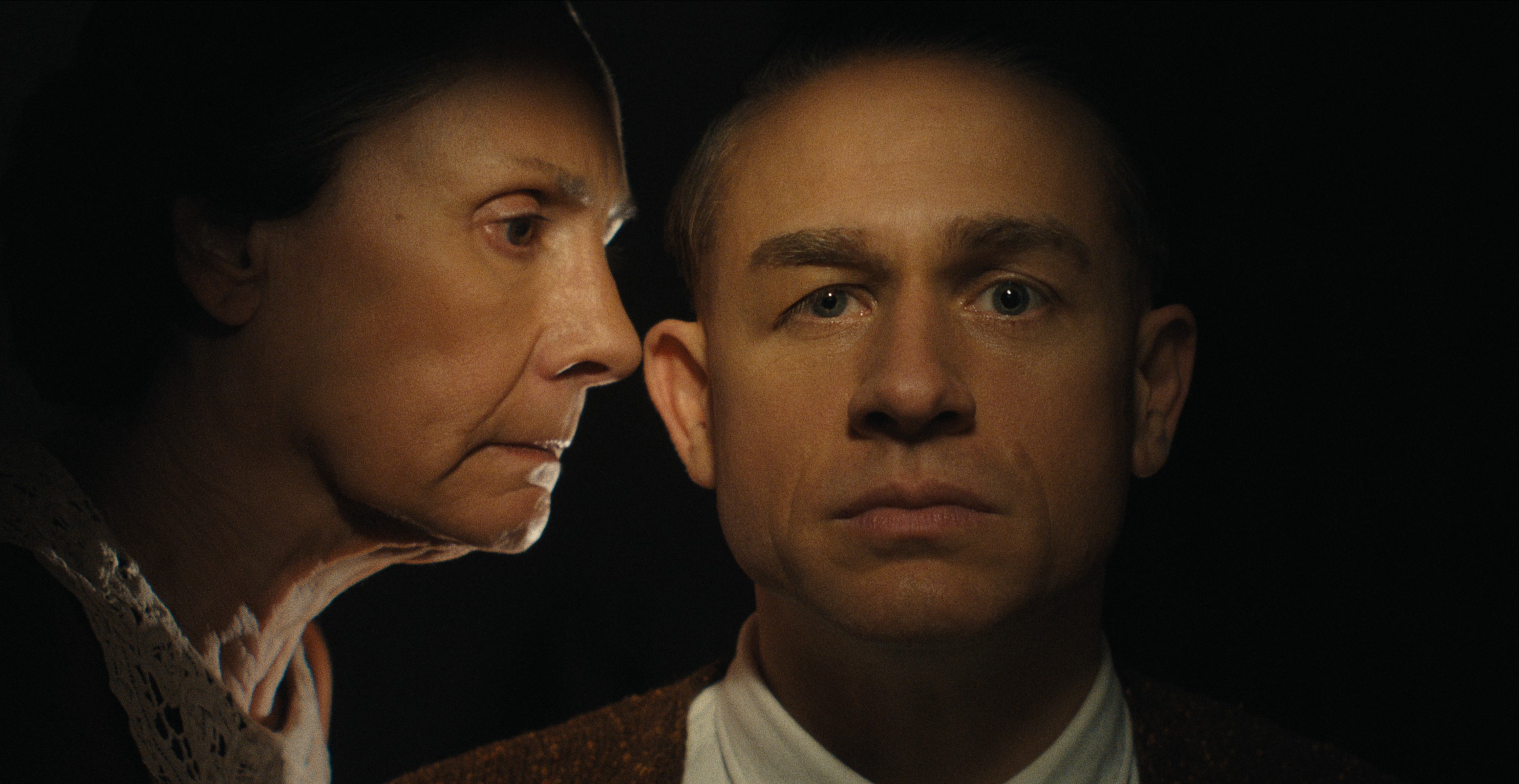In Ryan Murphy and Ian Brennan’s ‘Monster: The Ed Gein Story,’ the inner workings of Ed Gein‘s mind are explored in the fullest detail, and a connective line is drawn between his environment, background, and the horrifying acts he performs. As the third season of Netflix’s ‘Monster’ series, the biographical crime drama succeeds ‘The Jeffrey Dahmer Story’ and ‘The Lyle and Erik Menendez Story,’ and continues the inquiry into nature versus nurture as the backbone of a criminal life. The show carefully navigates through the serial killer’s personal account and blends in outside perspectives reflecting the American consciousness of that era. To that end, the show dramatizes the creation of ‘Psycho,’ ‘Texas Chain Saw Massacre,’ and other classics that borrow from Gein’s legacy. However, in the process, the show also dips its feet further into the world of crime by bringing in a chapter from the lives of other notorious serial killers. SPOILERS AHEAD.
Ed Gein’s Involvement in the Ted Bundy Investigations is a Fictional Addition to the Show
In the final episode of ‘Monster: The Ed Gein Story,’ Gein helps the Leon County Sheriff’s Office with the apprehension of a mysterious serial killer dubbed the Pacific Northwest Killer. The string of events begins with a letter from Richard Speck, an infamous serial killer who considers Gein his idol. In the letter, Speck details the contents of a fan letter he received from a serial killer who interchangeably goes by the names “Ted,” “Teddy,” or “Theodore.” Upon examining the details of Ted’s account of his crimes, Gein quickly connects him to the murderer who has been rampaging across popular cities, specifically targeting young women with a middle part in their hair. Gein relays this information to the authorities, following which the prime suspect is promptly identified as Ted Bundy. This riveting sequence, however, is not based on real life, as public records of Ted Bundy’s arrest show no reference to any external assistance from Ed Gein.

Notably, the show cleverly masks Gein’s involvement in the arrest by declaring his tip anonymous. However, the idea of a tip leading to Ted Bundy’s apprehension does not have a lot of footing in reality. While reports show that a number of people recognized the profile and sketch as Ted Bundy and reported his name as a potential suspect, the police initially did not pay much attention to the tips, as they deemed a law student with no adult criminal record unlikely to be the culprit. Furthermore, official records state that the law authorities first encountered the name “Ted” as a part of the investigation when four female witnesses claimed that a young man by that name asked them for help with his car. Moreover, there are no official reports backing the claim that Ted Bundy wrote a fan letter to Richard Speck, detailing his criminal acts. This reiterates the fictional nature of the show’s take on the investigation, where Gein is supposed to be the first to identify the suspect by name.
The Real Ted Bundy Was Arrested As a Result of Intricate Police Work
While Ed Gein takes great pride in being the reason behind Ted Bundy’s arrest in ‘Monster: The Ed Gein Story,’ the real-life version of Ted Bundy’s arrest paints a different story. By 1974, the police had a name and physical description at hand, leading to an accelerated nationwide search for the serial killer. However, with no definitive lead in sight, the following year, the authorities turned to a new method, which involved compiling the massive amounts of data collected and processing it with the help of a computer. Once information about the victims, the potential suspects, and various other leads was collected, the intersecting points were then mapped out, leading to a list of suspects that appeared in numerous lists at once. Ted Bundy was one of the names that popped up multiple times, and this played a major role in his eventual arrest. In the show, these connections are made not with the help of a computer, but by Gein, who collects information from various newspaper entries and presents his findings to the police.

Ted Bundy was reportedly arrested by Utah Highway Patrol officer Bob Hayward on August 16, 1975. The officer observed Bundy driving through a residential neighbourhood and fleeing at the sight of a police vehicle. Upon a closer inspection, police found numerous suspicious items in his possession, which eventually led to him being definitively tied to the Pacific Northwest serial killings. This marks another point of difference between the real-life events and how they are portrayed on screen, as Ted’s capture in the show is directly tied to Gein’s tip, with the police taking control of the situation shortly after. In reality, Ted Bundy’s apprehension and subsequent arrest were a lengthy and complicated process, which even saw the serial killer attempting to escape multiple times. As such, Gein’s fictionalized participation in the investigation serves to add a new dimension to his character, as he believes it to be a redemptive exercise.
Read More: Monster: Are Ed Gein’s Skin Suit and Face Mask Real, Prosthetic or CGI?


